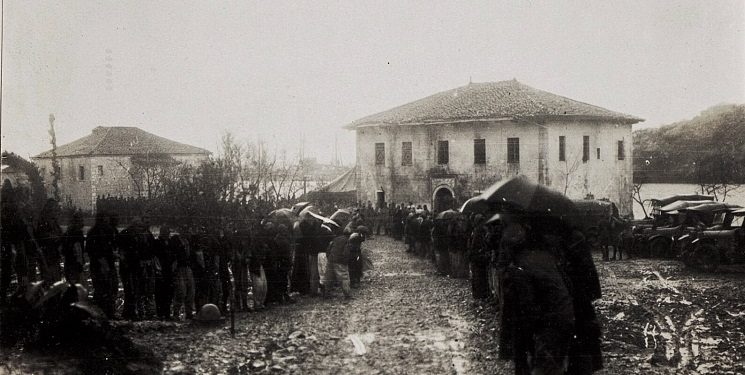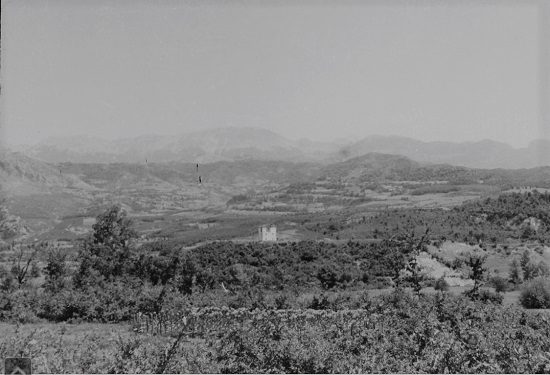Maksimilian Lamberc
– Report of the Journey to Northern Albania, 1916-
Memorie.al / I left Vienna on May 19 (1916) together with the art historian and epigraphist of the expedition. After a short stay in Sarajevo, which was used for research in the provincial museum, we left for Kotor and then climbed Lovcen, to Cetinje and Podgorica. Here I separated from my fellow travelers and set off for the Gruda tribe. This Albanian tribe, which is geographically the most remote, lives in the mountains east of Podgorica, in the Cemi valley, in the villages of Dinoshë, Pikalë, Prift, Lofkë, Bozhaj and Selishtë. Baron Nopça had traveled to this region in the summer of 1907 to go to Shala and Kelmend.
On May 28, I arrived in Prift, a settlement between Pikala and Lofka where the parish priest of Gruda lives. It is not a real village, but there is a new cell built with the funds of our monarchy, and a church, which is located a few minutes from it.
The name of the settlement Prifti, like many Albanian toponyms, comes from the name or title of the first inhabitant. For example, the toponym Domgjoni, which exists in several regions of Northern Albania, means the place where a parish priest named Gjon lived, around whom a village was created.
The numerous toponyms that end in -aj are tribal names just like our German toponyms, with; -ing, -ingen, -ungen. The present parish priest of Gruda is the very amiable Franciscan, Bonaventura Gjeçaj, an Albanian, who is called by the parishioners, Pater Bona, a good example of the Albanian antipathy to long names. He and Lieutenant Çuninka (Czuninka), who administered Gruda at that time, received me cordially.
Consequently, I was able to carry out my researches in the middle of Gruda without difficulty, because the inhabitants of the surrounding villages gathered at the Prift for religious services, to receive their share of the bereqet from the government, and to settle legal disputes before the judge appointed by the commander.
I talked with them to hear their dialect and, after they had overcome their initial distrust of me and were convinced that I had not come to their valley to build a factory, they sang me songs on the lute, which I wrote down…!
After a few days there, I was able to understand to some extent the dialect of the humane Gruda tribe. I would have liked to have stayed longer in the beautiful valley of Cemi, but I wanted to go to Shkodra, the spiritual center of Northern Albania.
So I took the road to Podgorica, and since my fellow travelers were scattered throughout Montenegro, each busy with his own field, I continued my way, to Shkodra alone…!
When the other participants of the expedition reached Shkodra, I traveled with them to the south. We went to Lezha, where I made an excursion to Vela, with Doctor Kidriæ.
From Lezha, I traveled with Doctor Buschbeck and a German gentleman, through the Molung Plain, to the old monastery of Rubik, now inhabited by Franciscans, the history of which was compiled by Milan von Šufflay in his very informative volume; Illyrisch-albanische Forschungen (Illyrian-Albanian Researches), recently published by Ludwig von Thallóczy.
In Rubik, we spent the day of Pentecost. From the hospitable and majestic monastery, situated on a mountain from which we could see far, we descended into the valley of the Fan River, to the point where the river flows into the Mat and, after passing Mat, we reached Milot.
During this part of the journey, I noticed that the Mirdita dialect is also spoken in the Lezha Highlands and further, from Lezha to the Adriatic. From Milot, we continued our way through Mamurras, to the old base of Skanderbeg, to the beautiful settlement of Kruja, with its natural springs.
The dialect of Kruja does not entirely correspond to the speech of Durrës and Elbasan, described by Weigand, and should be studied and noted separately. Unfortunately, this time, I did not have time for this. From Kruja, we rode through fertile fields covered with olive trees, to Tirana, the city of the Toptans, which has a beautiful location.
This city, with its magnificent and hospitable Muslim houses and beautiful gardens, idyllically hidden behind the high yellow walls, which were inconspicuous anyway, left us with deep impressions…!
In Tirana I separated from my fellow travelers, so as not to waste time on my main task, and returned to Shkodër, via Durrës and Lezha, where this time I visited Shëngjin. In Shkodër, where I stayed for three weeks, I continued studying the Mirdita dialect, with Marka Gjoka and other Mirdita speakers.
I also studied Albanian children’s songs, with the help of Father Vincenc Prennushi. Several times I also attended classes in schools that work according to Austrian programs, both Franciscan schools and public schools.
The boys, most of whom were resourceful and talented, knew mathematics, geometry and Albanian grammar well. The Franciscans and the public schools also teach German with great success, so that many young people can serve as interpreters for our troops.
In Shkodra I wrote down thirteen tales, directly from the mouths of the skillful storytellers. I was unable to write down more, because I did not have enough time to hold private conversations with the locals, to get to know them personally, which is of particular importance in this field.
In the meantime, the other participants in the expedition had returned to Shkodra and I decided to coordinate my plan to go to Mirdita, with their intention of traveling to Gjakova, through Northern Albania, hoping thus to reach Mirdita, after changing the route, through Northern Albania.
We left Shkodra at the beginning of July and crossed the Kiri valley through Drishti and Prekal, to the region of Shosh. Mark Lulashi from Shoshi served as our guide and turned out to be a good connoisseur of the Shoshi dialect. This dialect is characterized by the pronunciation; i q as c and i gj as x.
I also wrote down some songs in the Shoshi dialect. From Qafa e Gurakuqi, the road took us through Shoshi, down to the valley of the Shala River, from where, leaving Abat on the left, we climbed to Qafa e Agrit, which is the border between Shala and Mërtur. From here, we climbed over Palç, to Kotec and reached the Drini valley before Kotec.
The journey had offered us wonderful views, from Drishti onwards, with high, majestic mountains, with peaceful views of the Shosh valley and dark landscapes of Shala, but after we entered the Drin valley, which winds from here through the mountains of Mërtur, we were amazed by the truly magnificent scenery.
From Kotec on the Drin, we climbed to Rajë, the last settlement in Mërtur. This parish, where Father John lives in solitude, is located where the Valbona flows into the Drin. Higher up in the Valbona valley, lives the Muslim Krasniqi tribe, who do not at all deserve the bad reputation they have as a hostile and savage people.
In Gegëhyse I met some Krasniqi elders and noticed that they are wise people, who know how to enjoy a good joke and are still Muslims, with a lot of dignity. Their dialect belongs to the Gjakova group.
I separated from my three companions in the Valbona valley, who continued in a north-easterly direction, while I headed south, returning to Rajë, at the entrance to the valley.
There I met Beqir Noun and Kolë Marku, who were willing to inform me about their dialect, on the border with Merturi where, in a perfect mountain tranquility, the sweet Valbona, full of fish, flows into the Drin, and the Krasniqi, Gashi and Thaqi tribes join Merturi…!/Memorie.al
















